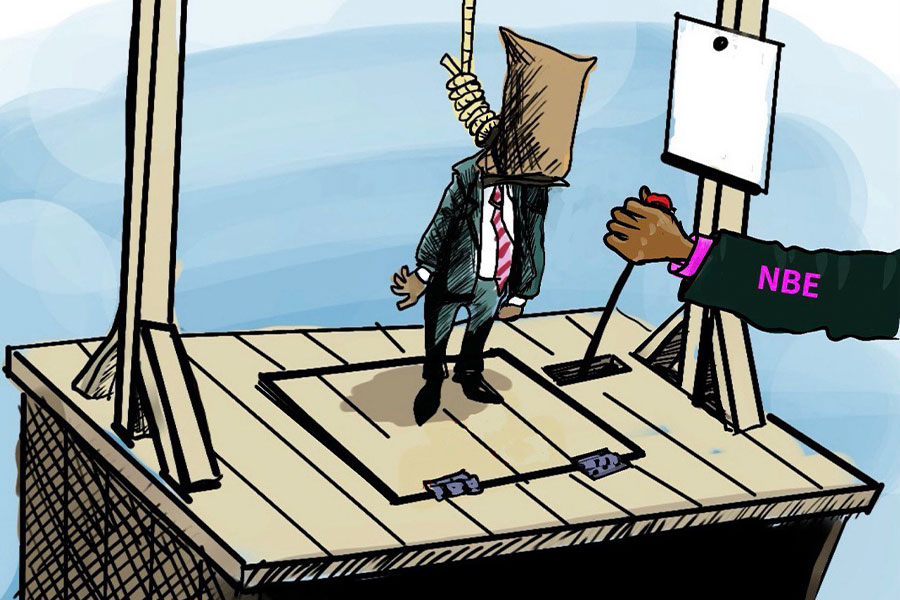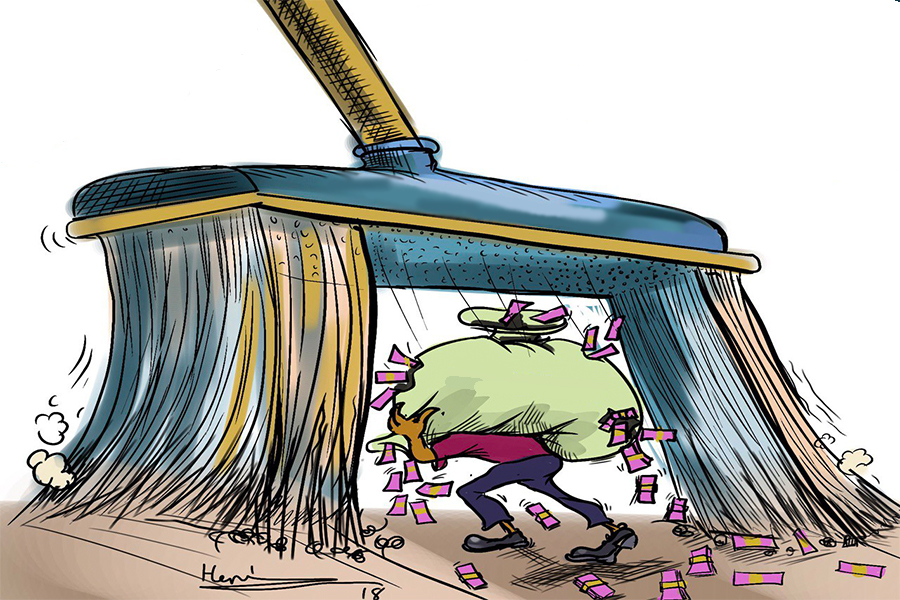
Photo Gallery | 180344 Views | May 06,2019
Sep 27 , 2025. By BEZAWIT HULUAGER ( FORTUNE STAFF WRITER )
In Addis Abeba, where more than 52,000 multi-story buildings punctuate the skyline, a draft directive promises to reshape the elevator industry. For the first time, firms installing, maintaining, and inspecting elevators will be licensed under a single framework, a sweeping reform by the Ethiopian Construction Authority after years of minimal oversight.
The elevator industry is bracing for sweeping reforms as construction regulators are to impose the first comprehensive licensing and inspection regime on companies installing, maintaining, and inspecting lifts and escalators.
A draft directive, tabled by the Ethiopian Construction Authority, is set to change how the industry operates in one of the fastest-growing urban landscapes.
For the first time, every business involved in the elevator trade, from installation to servicing to safety inspection, will be required to secure operating licenses and certificates of competence. Regulators say the rules are designed to enforce rigorous safety standards and eliminate fly-by-night operators in a market that has remained largely unregulated, despite rapid urban growth.
Construction authorities are pushing for the creation of legally authorised elevator safety inspection companies, certified by them. They will carry the sole responsibility for inspecting elevators and issuing the clearance reports that determine whether systems remain in operation. To qualify, they are required to get certificates of competence. The directive forbids inspection firms from any affiliation with companies that design, produce, install, or repair elevators to prevent conflicts of interest. Their only role will be to verify safety and compliance, with certified professionals conducting inspections to determine whether elevators remain in service.
However, the rules go further than mandating licenses. Elevator companies will have to employ trained engineers, technicians, installers, and inspectors with clearly defined roles. Their work will extend beyond installation to include design, maintenance, and emergency response in the event that passengers become trapped. Mechanical, electrical, structural, and control engineers will focus on specialised components, from motors and wiring to shafts and software.
Installers and technicians will handle physical assembly, while maintenance crews will be on call to keep elevators running and respond to emergencies. Quality controllers will test systems against safety standards, with project managers overseeing work from planning to final delivery.
The directive introduces a tiered classification system linking a company’s financial resources, staffing, and equipment standards to the complexity of projects it can handle. Firms with tens of millions of Birr in capital, experienced engineering teams, and advanced testing equipment will qualify for projects such as high-rise towers, hospitals, and emergency systems. Mid-tier contractors will be limited to commercial centres, public buildings, and mid-rise housing, while smaller firms will handle low-rise projects.
Regulators say this grading structure balances public safety with industry growth, preventing inexperienced or undercapitalised firms from taking on projects beyond their capacity.
“Elevators need regulation and regular inspection,” said Meaza Gebre Abizigi from the Authority’s Code & Standards Department. “There should be an independent body responsible for this.”
She likened the inspections to annual vehicle roadworthiness checks, stating that elevators will undergo routine evaluations to stay in service. Imported elevators will also be screened to verify compliance with the standards required of assemblers and maintenance firms.
The rules are arriving in a country where elevator accidents remain rare but occasionally deadly. The Addis Abeba Risk and Disaster Management Office reported three deaths in 2022, including a visually impaired man in Qality District and another near the National Theatre. In March this year, an elevator near Urael Church plunged from the seventh floor with 14 people inside. Popular singer Abdu Kiyar broke his leg in another incident, stirring debate about neglected maintenance and weak oversight.
International comparisons demonstrate the stakes. The Gitnux Elevator Death Statistics Report for 2025 puts the risk of dying in an elevator accident at about one in 10 million rides. In the United States, four people die each year in elevator-related accidents, with maintenance workers accounting for 60pc of fatalities. The most common causes (falls, crushing incidents, and door malfunctions) make up a quarter of all elevator injuries and deaths.
Fatalities occur more often in developing countries, where ageing infrastructure and weak oversight amplify risks.
Addis Abeba alone has more than 52,000 multi-story buildings, many equipped with ageing or poorly maintained elevators. Frequent power cuts and cost-cutting by developers compound the risks.
Industry veterans view the directive as an opportunity to raise standards in a market long dominated by inexpensive and low-quality imports. Shobole Engineering, a company founded in 2010 by Abdulfeta Abdela Shobole (PhD), has installed elevators for Ethiopian Airlines, the African Union (AU), Zewditu Hospital, and the National Defence complex. According to Abdulfeta, stricter rules could help professional firms like his compete fairly.
“The market is flooded with cheap and substandard elevators,” he told Fortune. “This regulation will give companies like ours an edge.”
He compared elevators to autonomous vehicles; both require routine inspections and maintenance to protect people and property. Poor-quality units, he said, compromise building standards and saddle owners with long-term costs.
Engineers working for Shobole Engineering have encountered elevators that are stranded between floors or entirely out of service during renovation projects. According to Abdulfeta, modern systems should be able to move to the nearest floor and open during power outages, but many elevators here lack this feature or have malfunctioning components.
Not everyone in the industry welcomes the directive. An engineer at a private assembly firm, speaking anonymously, dismissed the new rules as “largely formal,” questioning whether regulators had the expertise or capacity to enforce them effectively. Without specialised knowledge, he warned, the directive could amount to paperwork rather than meaningful oversight.
Abebe Dinku (Prof.), a veteran of the construction sector and a reputable academic, sees both promise and pitfalls. He supports the directive as a long-overdue reform in a market where nearly all elevators are imported, mostly from China, with only one locally assembled unit to date. Installation is often outsourced, and service providers cover maintenance only for the first year. After that, many elevators operate without proper oversight.
Abebe argued that the directive could improve building standards, but warned developers against cutting corners to save money.
“Expensive is cheaper in this case,” he said, noting that quality equipment, though costly upfront, reduces risks and long-term expenses.
He also raised concerns about the shortage of qualified inspectors, urging construction authorities to set up academic departments dedicated to elevator technology. Such programs, he urged, should offer specialised training and conduct nationwide surveys to measure the scale and condition of elevator systems across Ethiopia.
Ethiopia’s regulators hope the new rules will bring local practices closer to global standards. Among Professor Abebe’s suggestions is a requirement for inspection certificates to be displayed inside elevators, similar to norms abroad, so passengers know whether a system has passed safety checks.
PUBLISHED ON
Sep 27,2025 [ VOL
26 , NO
1326]

Photo Gallery | 180344 Views | May 06,2019

Photo Gallery | 170542 Views | Apr 26,2019

Photo Gallery | 161578 Views | Oct 06,2021

My Opinion | 137274 Views | Aug 14,2021

Nov 1 , 2025
The National Bank of Ethiopia (NBE) issued a statement two weeks ago that appeared to...

Oct 25 , 2025
The regulatory machinery is on overdrive. In only two years, no fewer than 35 new pro...

Oct 18 , 2025
The political establishment, notably the ruling party and its top brass, has become p...

Oct 11 , 2025
Ladislas Farago, a roving Associated Press (AP) correspondent, arrived in Ethiopia in...